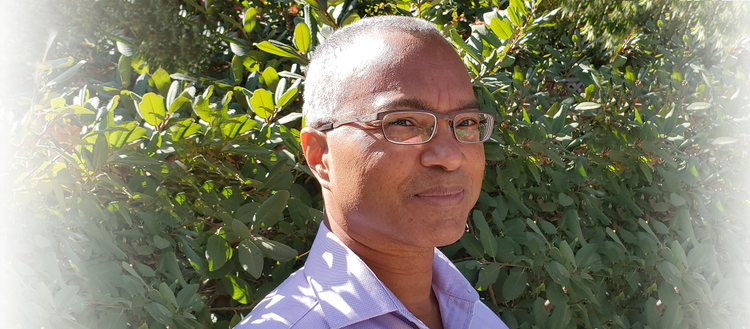How Roger Brooks went from theoretical physics to digital experiences

“Artificial intelligence is the special ingredient needed to make digital experiences feel more like real-world ones,” says Roger Brooks, senior director of data science and machine learning at Adobe.
When you walk into a physical store to buy a widget, you’re immediately greeted by a human being who tries to read you and interpret how best to pitch their widget to you, but that experience doesn’t exist in the digital world—and something needs to take its place. That’s where Brooks’ team comes in.
“A salesperson would reflect on when they last sold the widget to a similar person and personalize that engagement strategy to the current person. We’re striving to emulate that approach,” he says. “The challenge is figuring out how to use the things you learn about a customer at a digital touchpoint, combined with everything else you know about them to date and the patterns you can tease out of the mountains of data about similar customers, so you can do what a salesperson does naturally. Of course, the salesperson does far more.”
To create a digital experience that’s more like a human interaction, Brooks’ team turns massive amounts of data into insights that help companies understand their customers and communicate with them. Their Adobe Experience Cloud products help marketers shape the customers’ journeys, from pinpointing the right candidate customers and engagement time, to the identifying perfect engagement content, to driving conversion at the point of commerce.
The path from theoretical physics to data science
Using data to understand customers isn’t where Brooks thought he’d go when he launched his career in theoretical physics. His foray into machine learning started decades ago when he was an undergrad working on models of atomic nuclei. “I was doing what today would be viewed as designing optimization functions and other algorithms of machine learning—but that wasn’t what we called it in the natural sciences,” he says.
As he followed his passion for science, Brooks became a professor of theoretical physics, working on understanding the origins and fundamental principles of the universe, such as the nature of quantum gravity.
But he also started to wonder how the mathematics spinning through his mind could solve problems in industry, so he set out for the startup life just as the field of machine learning was emerging. Combining his background with his passion for technology innovations led him to applying physics, geometry, and topology to computer vision, content intelligence, and information retrieval problems, and even applying AI to mobile networks so you can get the best possible experience on your phone. Eventually, his technology passions brought him to Adobe.
“There’s so much we can do now, but we’re still in the early days. ML models perform akin to our brain’s amygdala and its pattern recognition and reaction,” he explains. Looking a decade into the future, he imagines a world where AI looks more like genuine human intelligence, or at least a simple version of the brain’s cortex. “There’s an approach that may bypass the need for statistics. It works to do what a child does—to increase knowledge by formulating and testing hypotheses. I’m excited because that’s where the word intelligence in AI will really start to manifest itself.”
Joining Adobe at the strangest time
Brooks joined Adobe this spring—just as everyone started working from home to flatten the COVID curve. “The Adobe culture softened the peculiarity.”
Adobe’s culture is one of the things that drew him to the company. “Adobe is one of the Silicon Valley companies where employees matter. It’s refreshing.” He was also drawn to Adobe for the products, the company’s position in the marketplace, and, of course, the chance to contribute to the team in its advancement of AI in Adobe’s products.
Even though he’s never had a chance to shake their hands in person, Brooks has already started to feel at home with the team he leads. “As a manager, I want to make sure we all understand the overall mission and our place in it and are equipped to succeed in our contributions to that mission. I’m getting to know the team members’ strengths and interests and using that to build an overall structure where we complement each other. People do best when they’re leveraging their own strengths.”